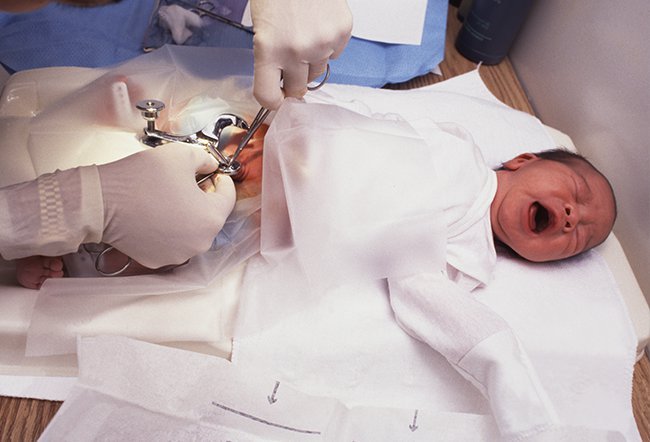Is circumcision a bad idea?

Circumcision is the removal of the skin covering the tip of the penis. There is no clear answer as to whether it is better to not be circumcised as circumcision has medical, ethical, and cultural concerns.
Male circumcision is a deeply personal decision you make for yourself or your son. The health benefits of circumcision and its harms are well-known, but circumcision has religious, ethical, cultural, and familial concerns, too. Circumcision is considered risky for a number of reasons, but only you can decide whether it’s right for you and your family.
Circumcision in adulthood is less common and more expensive than in childhood.
Many believe that routine circumcision is a bad idea. Most commonly, it is done in the newborn period or during childhood. At these ages, a boy cannot exercise choice. The procedure done cannot be reversed later.
Meanwhile, apart from ethics, the benefits of circumcision are often disputed. The benefits to physical health are one aspect, but it’s hard to assess the psychological effects on a young boy or even on older men.
Seen only from a medical point of view, circumcision appears beneficial. However, the matter also has ethical and cultural concerns. In your family and society, opinions regarding circumcision might be strong one way or another.
Is circumcision a bad idea? There isn’t an absolute answer to this. Apart from religious requirements, circumcision is a cultural necessity in some regions. Ultimately, everyone has to make a decision based on their own particular beliefs and situation.
Why Is circumcision considered bad?
There are several arguments against the routine removal of the foreskin of the penis, including the facts that it involves:
- Removal of healthy, functional tissue, the foreskin
- The psychological harms of modifying the genital organ
- No evidence of benefits
- Known risks of significant harm
- Unknown frequency of post-operative complications of circumcision
Conditions prevented by male circumcision
Circumcision is often done soon after birth. This provides protection against these conditions starting at birth or early infancy:
Phimosis
In these cases, the opening at the end of the foreskin is small. The foreskin cannot be pulled back to uncover the glans. This creates problems with hygiene, sexual function, and increased infections. If the opening is very small, passing urine may be difficult. Circumcision is curative, but phimosis can also be treated with topical steroids.
It’s normal for the foreskin not to retract in babies. By about the age of 3 years, the skin is movable. By the age of 5 years, the skin should be retractable. If you are planning a circumcision for your son to cure phimosis, you should wait until age 5.
Paraphimosis
In these cases, the foreskin, when pulled back, can’t be replaced. It forms a tight ring, and the blood supply to the penis can be stopped. This is an emergency and needs immediate treatment. Circumcision is one of the treatments available, but there are others. Paraphimosis cannot occur in circumcised boys and men.
Cancer of the penis
Squamous cell carcinoma of the penis is less common in circumcised men, but this is a rare cancer with or without circumcision.
Lichen sclerosus
This is a condition of the genital area with patchy, white skin that is thinner than normal. Circumcised boys and men are less likely to have it.
Human immunodeficiency virus (HIV)
Men who have sex with infected women have a lesser risk of getting HIV if they’re circumcised.
Urinary tract infection
Bacteria that cause urinary tract infections (UTI) frequently collect under the prepuce. Circumcision reduces these bacteria. Circumcised boys have fewer UTIs than uncircumcised boys.
Sexually transmitted infections (STIs)
The bacteria that cause STIs collect under the prepuce in male adults. Circumcised males have a lower number of these germs.
Circumcised men have lesser risks of human papillomavirus (HPV) infection and herpes simplex virus type 2 (HSV-2) infection. Their female partners are also less likely to have bacterial vaginosis.
Circumcision does not seem to protect against gonorrhea, syphilis, and chlamydia infections.
Dangers of circumcision
There are several dangers. Only some of them happen immediately after the circumcision. Some happen years after a baby was circumcised. It is difficult to know how many people have such problems.
Removal of the prepuce
The prepuce is a complex, double-layered structure. It protects the glans from irritation like rubbing against clothing and diapers.
Meatal stenosis
The end of the urethra, at the tip of the penis, becomes narrowed. Passing urine is difficult, and there may be back pressure effects on the urinary bladder and kidneys. Meatal stenosis is difficult to assess as a complication of stenosis because it happens months after the procedure.
Reduced sexual function
The prepuce is the most touch-sensitive part of the penis. It has many sensory nerve endings. It is argued that the penis after circumcision is less sensitive.
Pain during the circumcision and after
The local anesthesia injections given to the baby are themselves painful. The procedure may not be made completely pain-free, even following the injections. Pain in early life can alter brain development, neurodevelopment, and the stress response system.
Complications of Circumcision
Circumcision has known complications. The two most common are bleeding and infection after the procedure. Less commonly, there may be reduction in sensation of the head of the penis.
If you’re thinking about a circumcision, consider that complications are fewer when it is done by physicians in a hospital than traditional providers.
Is circumcision better in adulthood?
A child or newborn baby cannot decide whether circumcision is right for him. Is it better to pass up on newborn circumcision and let him decide for himself when he’s old enough? Though more ethical, circumcision during adulthood has its own disadvantages.
Circumcising a baby boy is simpler, more convenient, and carries lower risk than when the procedure is performed later. Also, circumcision protects against urinary tract infections, phimosis, and balanitis as soon as it is done.
It is convenient and less expensive, since the baby is already in the hospital after delivery. Newborns can be circumcised with local anesthesia injections. Older children usually need general anesthesia.
If you decide to get circumcised as an adult, you will need local anesthesia, spinal anesthesia (your body below the waist is numbed), or general anesthesia (you’re unconscious through the procedure). Healing takes 10 days or more, and you’ll need to take a week off from work.

SLIDESHOW
Sex-Drive Killers: The Causes of Low Libido See Slideshow
Conclusion
Circumcision at birth or childhood is common, for medical, religious, and cultural reasons. There are some benefits to being circumcised, but some harms, too. For an individual or a family, the decision is very personal. Familial, traditional, and cultural reasons may outweigh the medical considerations.
Latest Men’s Health News
Daily Health News
Trending on MedicineNet
Medically Reviewed on 4/27/2022
References
The American Academy of Pediatrics: “Male Circumcision,” “Prevention and Management of Procedural Pain in the Neonate: An Update.”
Global health, science and practice: “CDC’s Male Circumcision Recommendations Represent a Key Public Health Measure.”
Global Public Health: “Circumcision of male infants and children as a public health measure in developed countries: A critical assessment of recent evidence.”
National Health Service: “Circumcision in boys,” “Circumcision in men.”